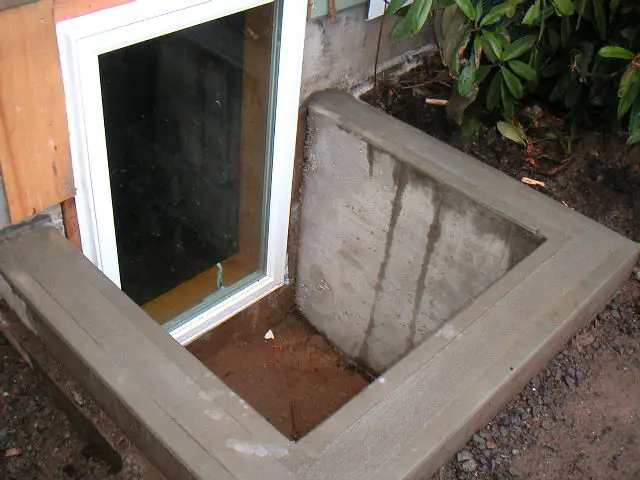Window Well without Drain: How to Keep Your Basement Dry

A window well without a drain can be a huge problem for your basement. If water accumulates in the window well, it will eventually find its way into your basement and cause damage. Let’s discuss how to keep your basement dry by installing a window well with a drain. We will also provide tips on how to maintain your window well so that you can avoid water accumulation in the future!
Why Your Window Well is Not Draining?
There could be a few reasons why your window well is not draining properly. One reason may be that the drainage system was not installed correctly in the first place. If this is the case, then you will need to call a professional to come and fix it.
Another possibility is that something is blocking the drainage pipe, such as leaves or dirt. In this situation, you may need to remove whatever is blocking the pipe before it can work properly again. If there are any trees nearby then their roots could also be causing problems by puncturing through into your basement floor and foundation walls which would then cause water leakage problems later down the line!
A third possibility might just mean that over time some dirt or sediment has built up in your window well. This could also mean a build-up of debris such as leaves and twigs which then block the pipe leading from outside into your basement floor.
Another possibility is that there may be a clog somewhere along with the drainage system itself, so it’s important to check all of the drainage pipes and clean them out as necessary.
How To Install A Window Well Drain?
Window wells are a common feature in homes, especially those that have basements. They allow natural light into the basement and also provide an escape route in case of a fire or other emergency. If your home has a window well, you’ll need to install a drain to keep it from filling with water.
Here’s how to do it:
- Find out where you want to locate the drain pipe. It should be on an outside wall of your house and near a window well that has not been covered over with concrete or other material.
Make sure it’s also at least ten feet from any underground utility lines such as gas pipes or electric wires. If possible, check for leaks before you start drilling.
- Drill a hole in the wall where you want to install the drain pipe. The hole should be big enough for the pipe to fit through, but don’t make it too big, or else water will leak out.
- Insert the drainage pipe and seal it into place with silicone caulk or another type of waterproof sealant.
- Cut a hole in the window well lid and put the drain cover over the hole.
If your window well doesn’t have a lid, you can buy one at a hardware store or make your own out of plastic or metal.
- Connect the drain pipe to a downspout on your house or to a storm sewer system.
- Cover up any exposed soil around the window well with landscaping fabric.
This way you can easily install a window well drain without having to hire anyone. You can also enjoy this as a little DIY home improvement project.
Tips To Prevent Basement Window Wells From Flooding
Window wells must be large enough to hold rainwater. If the well is too small, the water will overflow and flood your basement. You can buy a window well cover to keep the water out, or you can build a concrete wall around the well to keep it from overflowing.
If you have a garden on your property, make sure that there are no drains near the window well. If you have an open drain, then rainwater will collect in it and overflow into your basement.
Make sure to clean out leaves from the window well regularly so they don’t clog up any drains or cause water to overflow.
If you have a basement window, make sure that it’s not cracked or broken. If so, then water will get through those cracks and cause your basement to flood. You can buy clear plastic sheeting from any hardware store and cover the window with it before installing the window well cover.
Your window well should be covered with an appropriate material such as concrete, brick, stone, or pavers. Make sure that this material is thick enough so it won’t crack when there’s a lot of rainwater in the well.
Installing a drainage system in your window well is the best way to prevent it from flooding. You can buy a drainage system at any home improvement store. The drainage system should have a grate on the bottom so that water can flow out and into a storm drain or downspout. Make sure that the drainage system is connected to a sewage line so the water doesn’t just flow back into your basement.
Keeping the window well clean is important for preventing basement flooding. Make sure to remove any leaves or debris from the well regularly so that water can flow freely through it. You can use a garden hose to flush out any debris that might have been collected in the well.
FAQ:
How do I stop my window well from filling up with water?
There are a few ways to stop your window well from filling up with water. One way is to install a grate over the top of the window well to allow the water to drain out. You can also install a weep hole (a small hole at the bottom of the window well) to allow the water to drain out. Another option is to fill up the window well with gravel or rocks, which will help absorb the water.
Do all window wells need a drain?
A drainage option is not always a must-have for window wells. If you are going to install one, it should be an angled pipe of at least 6 inches and installed as close to the opening as possible. Drains may also need to be covered so they don’t fill with leaves or collect ice in the winter months.
8 Quick and Simple Drain Unclogging Techniques – DIY
Must READ!
7 Ways to Transform Your Old House into a Showplace. CLICK HERE
